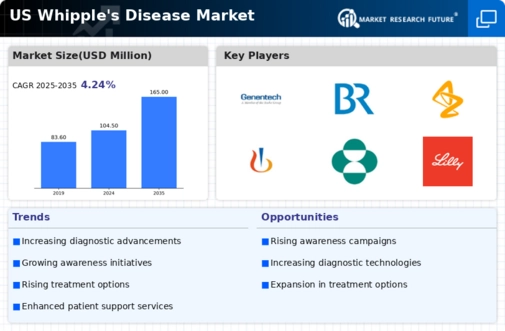The US Whipple's Disease Market exhibits a niche landscape characterized by the intersection of healthcare innovation, specialized treatments, and patient-centric solutions. Whipple's disease, a rare systemic illness caused by the bacterium Tropheryma whipplei, necessitates effective and tailored therapeutic interventions, leading to a market environment where manufacturers focus on developing advanced diagnostics and treatment paradigms.
The competition is driven by factors such as research advancements, strategic collaborations, and an increased understanding of the disease pathophysiology. Furthermore, the rarity of the disease presents both challenges and opportunities for companies to establish their presence through targeted therapies and innovative healthcare solutions tailored for affected patients.
In the context of the US Whipple's Disease Market, Genentech stands out with its robust portfolio and commitment to enhancing patient care. The company's strengths lie in its focus on precision medicine and biopharmaceutical advancements, which have propelled it to a significant position within the rare disease segment. Genentech's strong research and development capabilities enable it to explore distinct therapeutic avenues and foster innovations that directly address the complexities of treating Whipple's disease.
This reputation for delivering high-quality, science-driven products allows Genentech to build trust with healthcare providers and patients alike, reinforcing its role as a leader in the market. Its strategic collaborations with academic and research institutions further amplify its competitive edge in the US landscape.
Bayer, on the other hand, presents a compelling profile in the US Whipple's Disease Market through its diversified portfolio of healthcare solutions. Known for its strong emphasis on research and development, Bayer brings forth specialized treatments and significant resources to tackle rare diseases, including Whipple's disease. The company's key products and services are tailored solutions that aim to improve patient quality of life, thereby bolstering its presence in the competitive landscape.
With a strong focus on enhancing treatment efficacy, Bayer's strategic mergers and acquisitions have also played a notable role in expanding its capabilities in the niche market. The company's ability to leverage its extensive experience in pharmaceuticals and biotechnology fosters further advancements in therapy development specific to Whipple's disease, ensuring that it remains at the forefront of innovation and patient care within the US market.
























